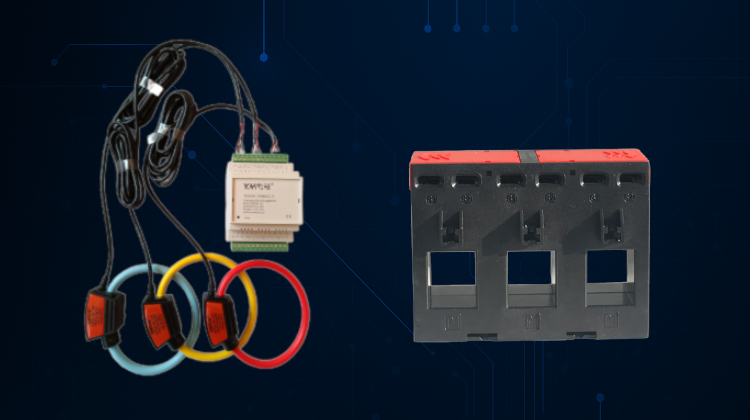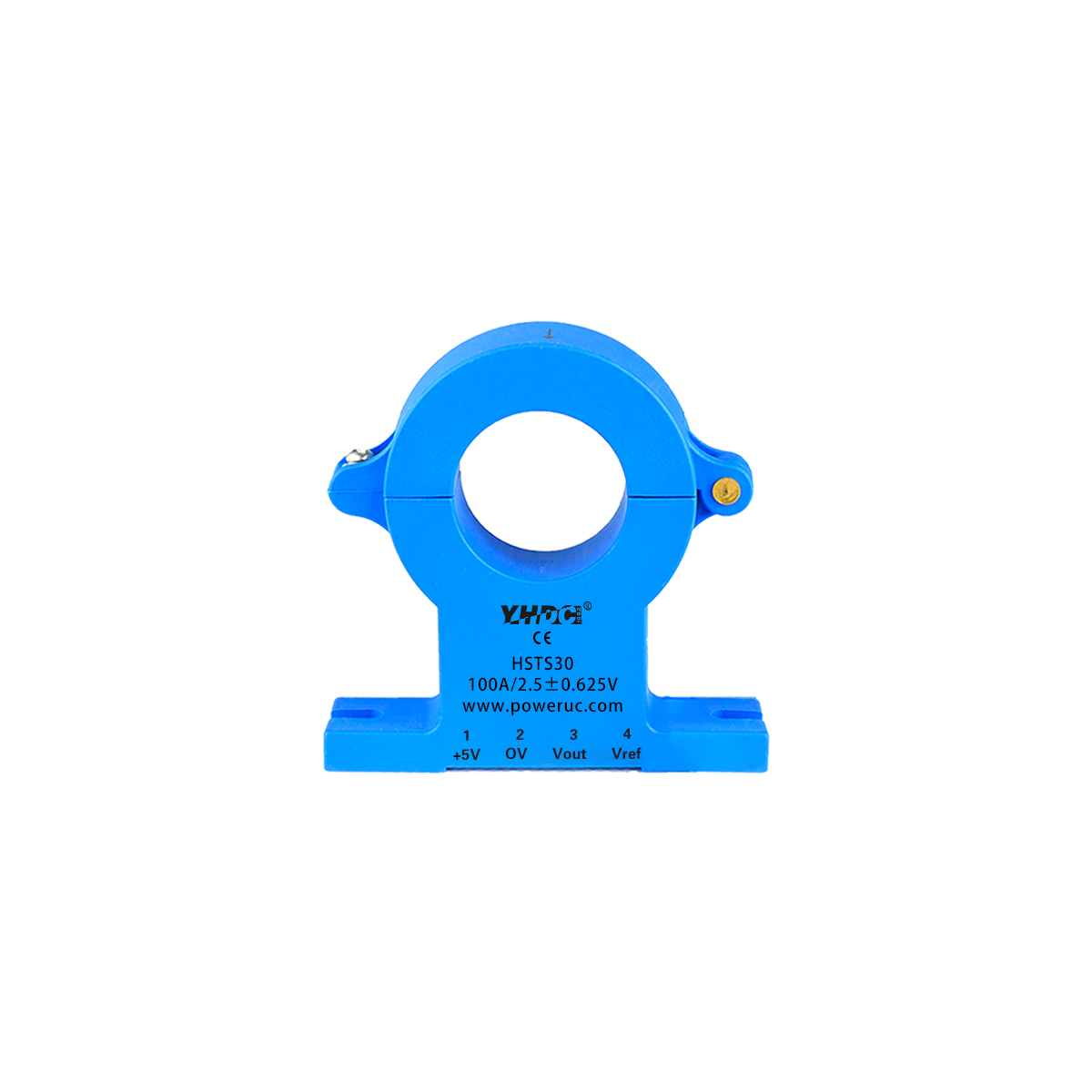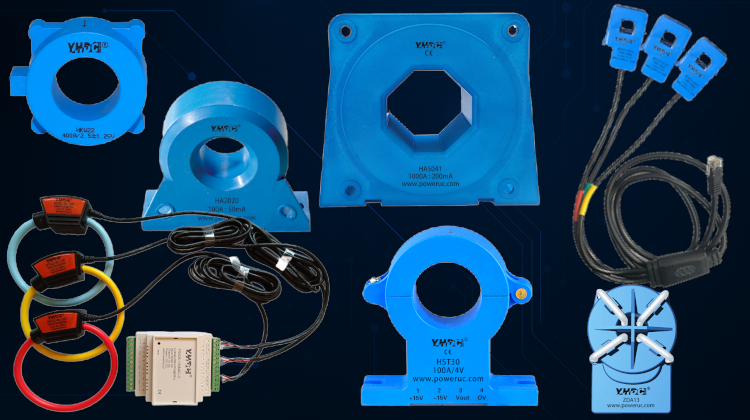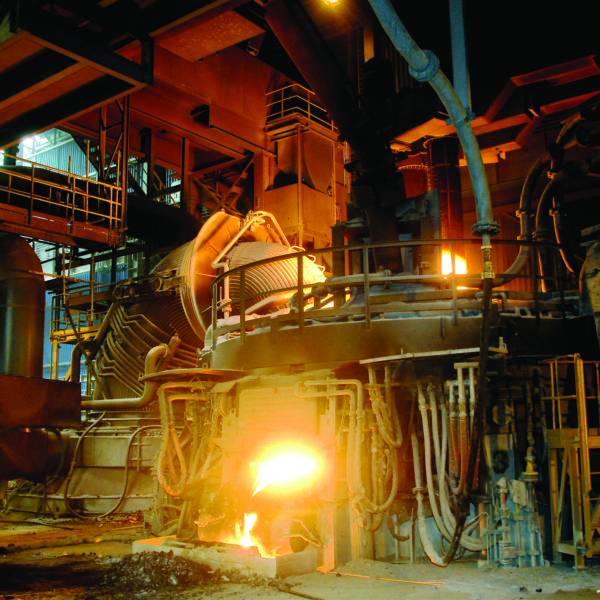Cerrar
Producto
Transformadores de corriente de núcleo partido

The Rogowski Coils (RC) and Current Transformers (CTs) are two core technologies for measuring alternating current, both of which operate based on the principle of electromagnetic induction. However, there are fundamental structural differences between the two the design with or without a magnetic core leads to significant differences in their performance, application scenarios and safety. CT adopts a core structure and performs exceptionally well in high-precision, low-frequency and steady-state measurements. RC adopts a coreless design, featuring greater flexibility, a wider dynamic range and anti-saturation characteristics, making it an ideal choice for high-current, high-frequency and transient applications.
The core design is the most critical differentiator between the two technologies.
| Característica | Rogowski Coil (RC) | Transformador de corriente (TC) |
| Core Structure | Coreless (Air-core). | Iron Core (Heavy magnetic core). |
| Working Principle | Based on Faraday’s Law of Induction. Generates a voltage proportional to the rate of change of the primary current (di/dt) . | Based on electromagnetic induction. Relies on magnetic coupling via the core to transform primary current to secondary current. |
| Output Signal | Low-level voltage signal(di/dt). | Current signal (typically 5A or 1A secondary). |
| Signal Processing | Requires an external integrator circuit to convert the derivative voltage signal back into a signal proportional to the current. | Output current is typically measured directly or converted to voltage via a burden resistor. |
The coreless design of the Rogowski coil provides distinct advantages in dynamic range and safety, while the iron core of the CT offers inherent simplicity and high accuracy at rated conditions.
| Characteristic | Rogowski Coil (RC) | Transformador de corriente (TC) |
| Core Saturation | None. Immune to magnetic saturation, even at extremely high currents. | Prone to saturation when exposed to currents higher than its rating, leading to non-linear response and measurement failure. |
| Measurement Range | Very Wide. Can measure from a few Amps up to thousands of Amps (e.g., 10kA) with a single unit. | Narrower. Limited by the core size and saturation point. Different CTs are required for different current ranges. |
| Frequency Response | Superior/Wide Bandwidth. Excellent response for high-frequency and transient currents (e.g., motor inrush, pulsed currents). | Limited. Frequency response is restricted by the core material. Best suited for power-line frequencies (50/60 Hz). |
| Linearity | Excellent. Maintains linear response over its entire wide measurement range. | High Accuracy at rated current and frequency, but linearity degrades significantly upon saturation. |
| Safety (Open Circuit) | Inherently Safe. Output is a low-level voltage signal, posing no high-voltage risk if the secondary is open. | Hazardous. Leaving the secondary circuit open while current is flowing can generate extremely high, lethal voltages. |
| Physical Form | Flexible and lightweight (e.g., half a pound for a 5,000A unit). | Rigid, heavy, and bulky (e.g., up to 65 pounds for a comparable range). |
| Installation | Easy. Flexible, clip-around design simplifies installation on busbars or irregular conductors, especially in tight spaces. | Difficult. Rigid design often requires a full power shutdown and custom fabrication for large or irregular conductors [3]. |
| Complexity/Cost | More complex to use due to the required external or integrated integrator. Can be more expensive than basic CTs. | Simpler to use (direct current output). Generally less expensive for standard applications. |
The choice between an RC and a CT depends heavily on the specific requirements of the application.
| Technology | Ideal Applications | Less Suitable Applications |
| Bobina Rogowski | – High-Current monitoring (e.g., up to 5,000A and beyond). | – DC current measurement (RCs only measure AC/rate of change). |
| – High-Frequency and Transient analysis (e.g., power electronics, motor inrush, fault currents). | – Applications where the cost/complexity of the integrator is prohibitive. | |
| – Retrofitting or installations with irregular conductors or limited space. | – Standard utility metering where high-accuracy, low-frequency measurement is the sole requirement. | |
| Transformador de corriente | – Standard Utility Metering and revenue applications (high accuracy at 50/60 Hz). | – High-current measurement where saturation is a risk. |
| – Relay Protection and industrial monitoring at power-line frequencies. | – High-frequency or transient current analysis. | |
| – Applications where simplicity and low cost are prioritized. | – Installations with irregular busbars or tight space constraints. |
Rogowski coils and Current Transformers are complementary technologies. The Current Transformer remains the workhorse for traditional, high-accuracy, steady-state power monitoring and protection at power-line frequencies. The Rogowski Coil, with its coreless design, offers a modern, flexible, and safer solution that excels in demanding environments involving high currents, wide dynamic ranges, and high-frequency transients, particularly in power quality analysis and power electronics testing.






Copyright © 2024 PowerUC Electronics Co.